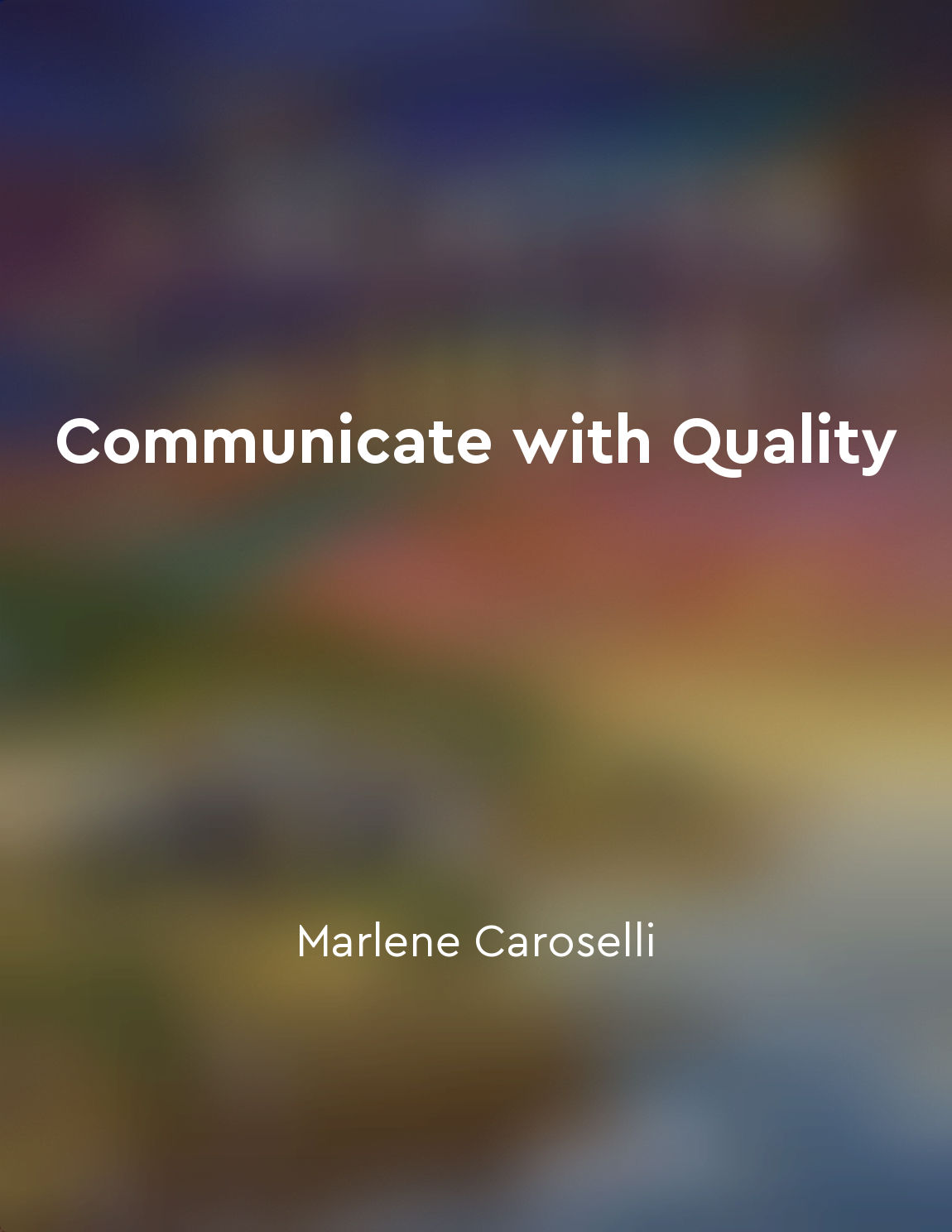Audio available in app
Be open to different perspectives in communication from "summary" of Communicate with Quality by Marlene Caroselli
Communication is not a one-way street. It involves a give-and-take, a back-and-forth exchange of thoughts, ideas, and perspectives. In order to truly communicate effectively, one must be open to different perspectives. This means being willing to listen to others, consider their viewpoints, and incorporate them into the conversation. It requires a certain level of openness and flexibility, a willingness to step outside of one's own preconceived notions and biases. When we communicate with others, we bring our own unique experiences, beliefs, and values to the table. These factors shape the way we perceive the world and interact with others. However, it is important to remember that not everyone shares the same perspective. Each individual brings their own set of experiences and beliefs to the conversation, which may be different from our own. Being open to different perspectives in communication is about recognizing and respecting these differences. It is about acknowledging that there is more than one way to see a situation, and being willing to consider alternative viewpoints. By doing so, we can gain a deeper understanding of the issue at hand and foster more meaningful and productive conversations. At times, it may be challenging to be open to different perspectives, especially when they conflict with our own beliefs or values. However, it is important to approach these situations with an open mind and a willingness to learn from others. By doing so, we can expand our own horizons, challenge our assumptions, and grow as individuals.- Being open to different perspectives in communication is essential for building strong relationships, fostering understanding, and facilitating meaningful dialogue. It requires a level of openness, flexibility, and willingness to listen and learn from others. By embracing different perspectives, we can enrich our own understanding and create more effective and impactful communication exchanges.


